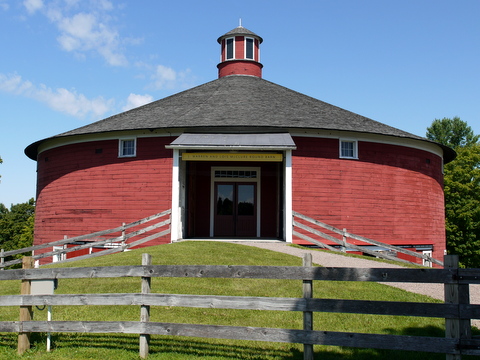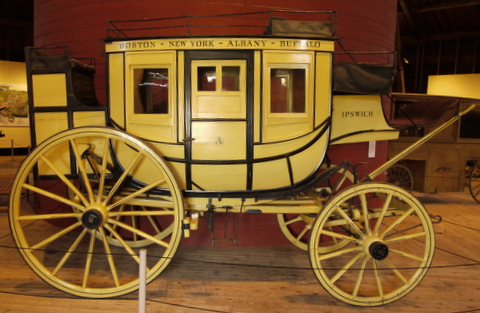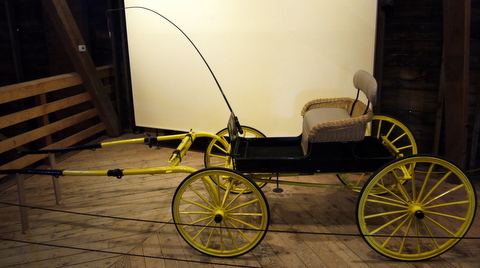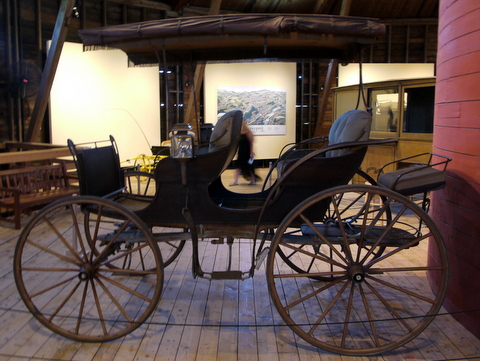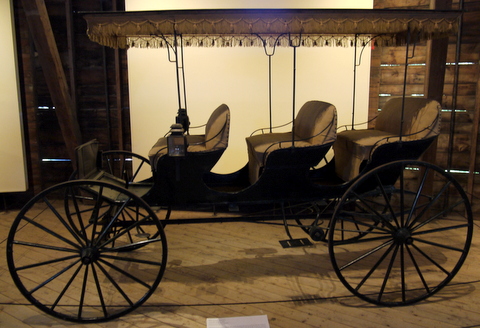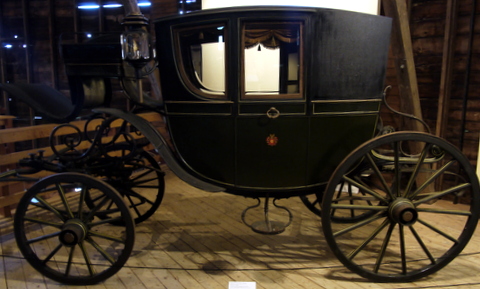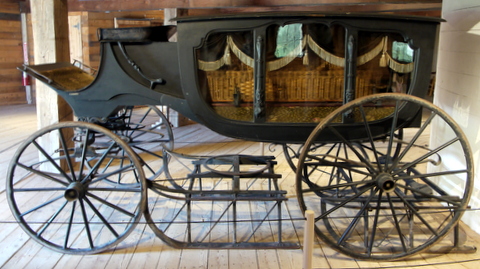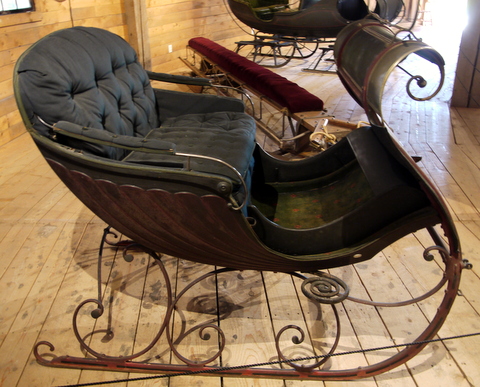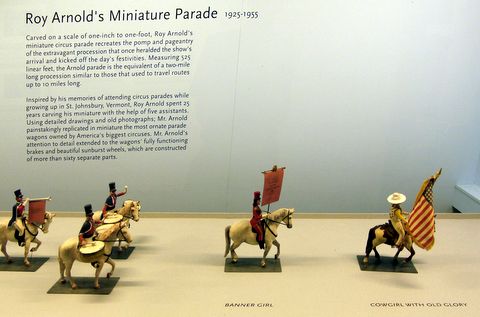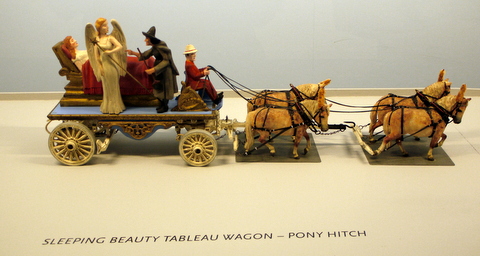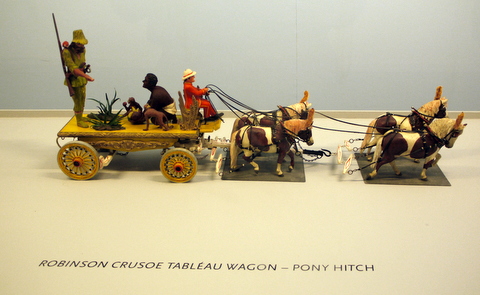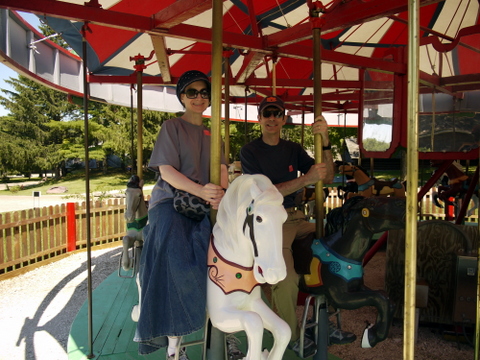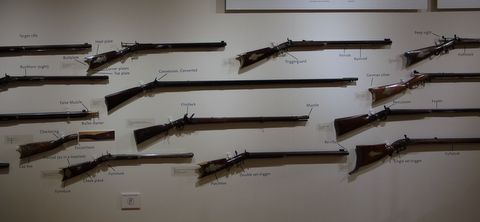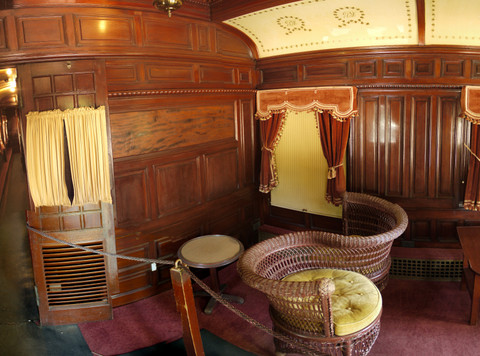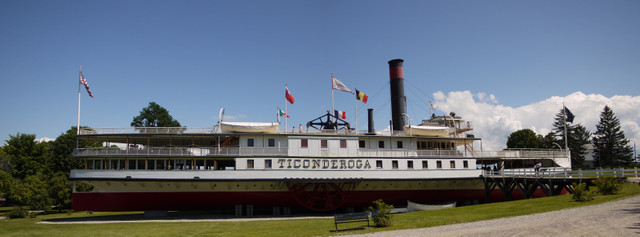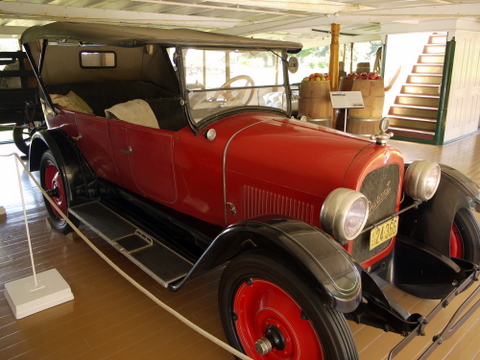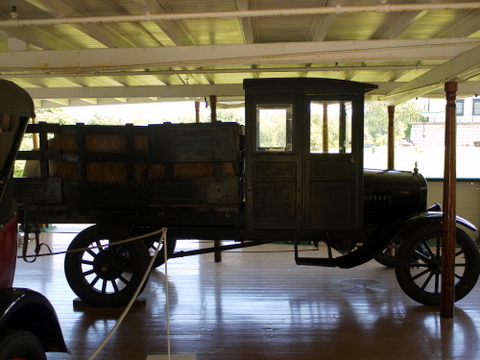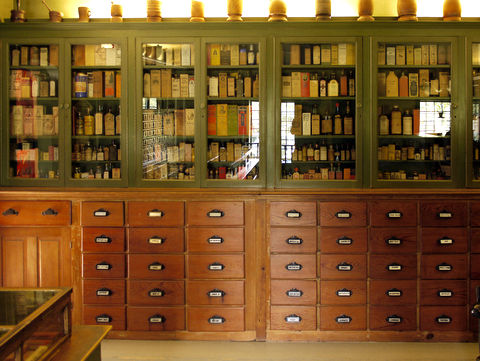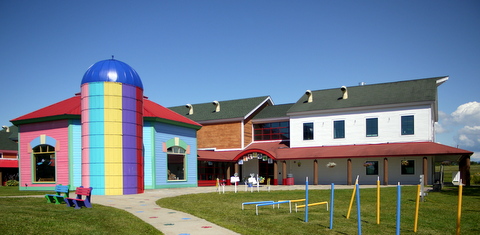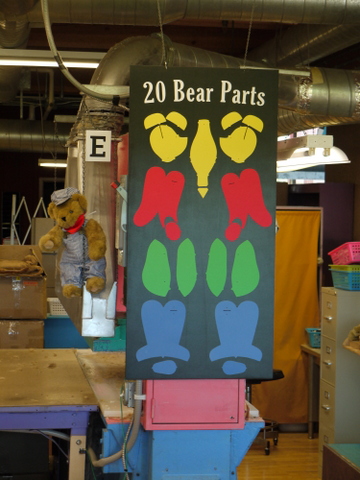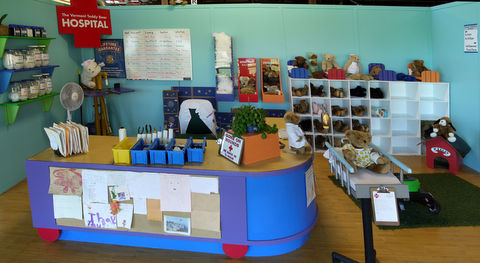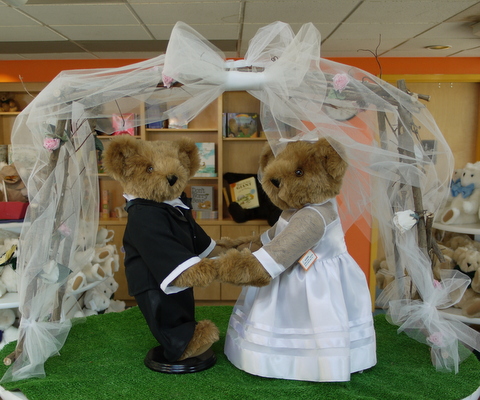Sunday: We drove west to Shelburne, south of Burlington, where our first stop was the Shelburne Museum. The museum is a large 45-acre facility with 38 buildings, including 25 historic buildings that had been relocated to the site. The buildings house collections of Americana that include fine art, folk art, quilts, carriages, firearms, etc. The museum was founded by Electra Havemeyer Webb, whose father had great wealth from the sugar industry, and whose late husband had even greater wealth as a descendant of the Vanderbilt family.
Our first stop was at a 1901 round barn from East Passumpsic, which currently houses a collection of carriages:
The Abbot-Downing Company of Concord, New Hampshire built more than 1,500 stagecoaches, which were used throughout the U.S. and saw exports to Australia, Africa, and South America. Their best-known coach was this 1852 Concord Coach, modeled after the coronation coach of King George III.
The American Carriage Company of Cincinnati, Ohio, produced this ca. 1875 Pony Runabout. This tiny vehicle allowed a child and adult to sit together, with the child observing the adult controlling the pony. The child could then take over and learn to drive:
The lighting in the barn was not ideal, and with my camera set at 400 ISO, the remaining photos had shutter speeds slow enough to introduce a bit of blur. I hadn’t realized it at the time, or I would have opted for a higher “film speed.” Still, a few of the photos are acceptable.
Joubert and White of Glens Falls, N.Y. designed this rugged, all-terrain Buckboard Surrey ca. 1900. Surreys cost around $50-100 at that time:
A three-seat surrey by an unidentified manufacturer, also ca. 1900:
This Million et Guiet 1890 Berlin model was imported from Paris:
This hearse by A. Tolman & Co. of Worcester, Massachusetts could be fitted with either wheels for traveling over roads or sleigh runners for operating in snow. It is dated ca. 1865:
This is a cutter, a small horse-drawn sleigh by B. Ledoux of Montreal, dating from ca. 1885:
Leaving the barn, we charted a clockwise tour through the grounds and walked to the adjacent Circus Building, constructed for the museum in 1965. The building houses carousel figures and circus posters, but the highlight is a 500′ long miniature model of a circus parade carved by Roy Arnold and five assistants between 1925-55:
Outside of the Circus Building was an operating carousel, and we enjoyed a ride:
Next we visited a firearms collection in the Beach Gallery:
Of course, what collection of Americana would be complete without railroad artifacts, so the Shelburne Museum has . . . a railway station, steam locomotive, and rail car! Here’s the 1915 locomotive no. 220, a 4-6-0 engine that saw service with the Central Vermont Railway.
The rail car is the 1899 Grand Isle, designed as a private car for Dr. and Mrs. William Seward Webb. He practiced medicine, but presumably had more financial success from his marriage to Eliza “Lila” Vanderbilt, granddaughter of Cornelius Vanderbilt. (Their son, James Watson Webb II, married Electra Havemeyer, daughter of Henry Osborne Havemeyer, the President of the American Sugar Refining Company. She founded the Shelburne Museum.) As noted above, it was Electra Havemeyer Webb who founded the museum. Very wealthy people who did not want to share a rail car with other passengers could purchase their own private railcar, and this is one such example.
As if having a locomotive engine and railcar (and station) isn’t cool enough, the museum also has a 220′ steamship! The 1906 Ticonderoga is the America’s last remaining walking beam sidewheel passenger steamer.
Parked on the deck of the steamer were a 1925 Durant touring car and a Ford Model T truck:
We toured the interior of the steamship, including the passenger compartments, dining area, and even the engine room and crew quarters.
We then left the steamship and continued our clockwise tour of the grounds, next visiting a well-stocked Apothecary Shop.
We also toured a tiny two-cell jail constructed of slate, which was built in 1890 in Castleton, Vermont. We also toured a shop that included toys, and viewed an exhibit of contemporary quilts. We walked past a covered bridge, and visited the Webb Gallery, which included works by a number of important American artists.
While we could have spent longer at the Shelburne Museum, we also wanted to visit the Vermont Teddy Bear Company. Therefore, we left the museum and drove a short distance to the south, arriving at the brightly colored factory, where we registered for a tour.
Unfortunately, as it was a Sunday, the factory was silent. The tour was still interesting, and we learned all about the (relatively short) history of the company, how it is distinguished from other teddy bear manufacturers, the parts that go into making a teddy bear, etc.:
It was a quiet day in the hospital, where injured bears are restored to perfect health:
The gift shop was open, and included this adorable pair:
We purchased our own Vermont Teddy Bear, complete with a t-shirt embroidered with our names, and headed back to Stowe for the evening.
Next: We hike Laraway Mountain.

